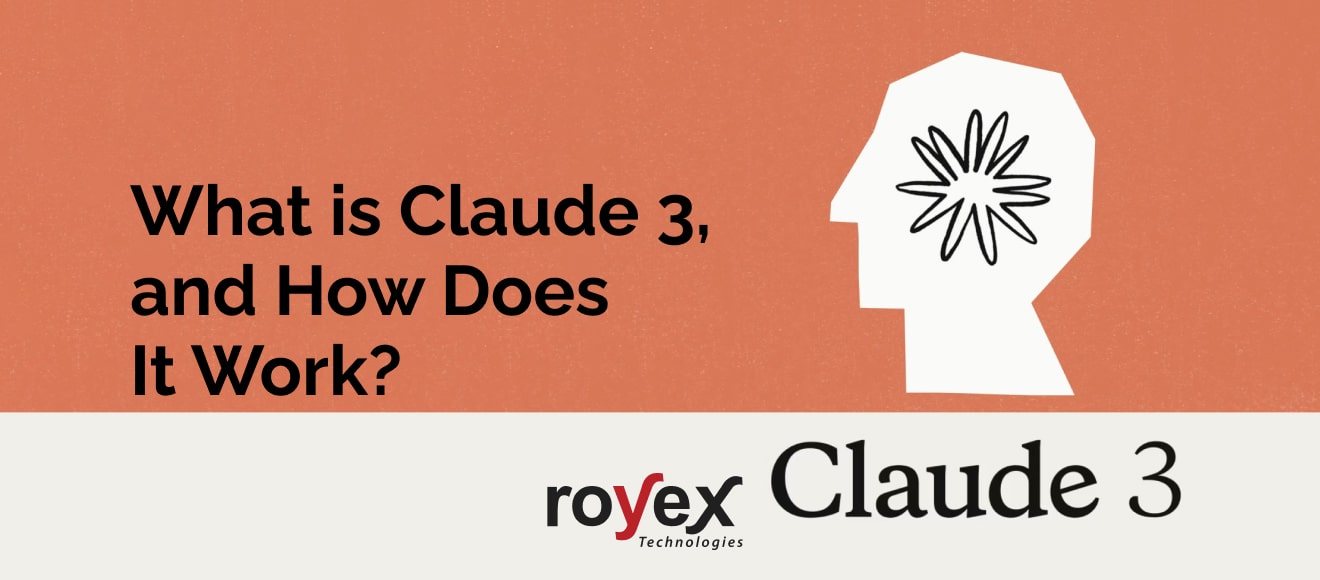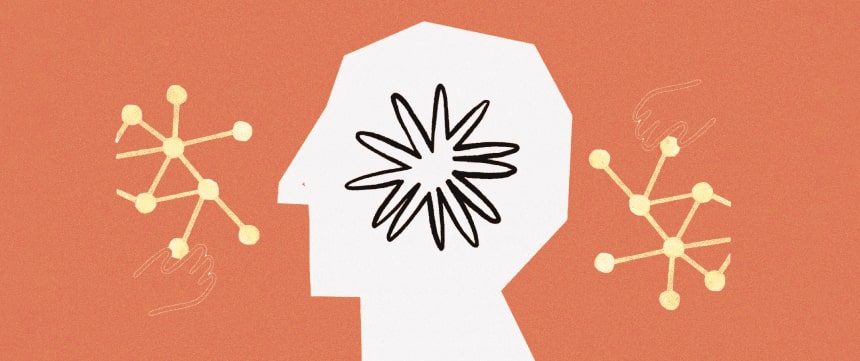
What is Claude 3, and How Does It Work?
The relentless race for AI supremacy shows no signs of slowing down. Anthropic, a major player in the field, throws its hat into the ring with the much-anticipated launch of Claude 3.
This isn't just any ordinary AI model; Claude 3 signifies a significant leap forward. But what exactly is it?
In essence, Claude 3 is the new large language model (LLM) powering the familiar Claude AI chatbot. Interestingly, it's not a single entity, but a trio of models under the Claude 3 umbrella:
-
Claude 3 Opus: The top-of-the-line model boasting premium performance.
-
Claude 3 Sonnet: The mid-tier option striking a balance between speed and intelligence.
-
Claude 3 Haiku (unreleased): The speed bot designed for real-time responsiveness.
Anthropic claims that Claude 3 not only surpasses its predecessor, Claude 2.1, but also outshines competitors like ChatGPT's GPT-4 and Google's Gemini Ultra.
This article delves deeper into the world of Claude 3, exploring its functionalities, capabilities, and how it stacks up against the current frontrunners in the AI race. We'll unveil what makes Claude 3 unique and analyze its potential impact on the ever-evolving landscape of artificial intelligence.
Understanding Claude 3's Architecture: Opus, Sonnet, and Haiku Explained

At its core, Claude 3 is built upon a sophisticated neural network architecture, drawing inspiration from deep learning frameworks. Leveraging cutting-edge techniques in machine learning, it operates on a transformer-based model, enabling it to process and comprehend vast amounts of textual data with remarkable efficiency. The architecture comprises multiple layers of neural networks, facilitating the extraction of intricate patterns and nuances from input text.
One of the defining features of Claude 3's architecture is its attention mechanism, which enables the model to focus on relevant parts of the input sequence while generating responses. This attention mechanism enhances the model's contextual understanding and enables more coherent and contextually relevant interactions.
Under the umbrella of Claude 3, three distinct LLMs have been unveiled, each tailored to meet specific user needs. Leading the pack is Claude 3 Opus, Anthropic's premium AI model exclusively available to Claude Pro subscribers. According to the company's benchmarks, Opus boasts graduate-level reasoning capabilities, scoring an impressive 50.4% compared to GPT-4's 35.7%.
Following closely behind is Claude 3 Sonnet, catering to users who opt out of the Claude Pro subscription. Despite being more accessible, Sonnet maintains remarkable capabilities, achieving a graduate test score of 40.4%, outperforming GPT-4's 35.7% rating.
Lastly, Claude 3 Haiku completes the trio as the forthcoming model, designed for speed and efficiency. While it may lack some of the sophistication of its counterparts, Haiku excels in delivering near-instant responses, making it ideal for customer-facing AI chatbots and time-sensitive data processing tasks.
Training Methodologies
Training Claude 3 involves exposing the model to extensive datasets containing diverse examples of human language interactions. These datasets encompass a wide range of topics, styles, and linguistic nuances, ensuring that the model develops a comprehensive understanding of language and communication dynamics.
The training process involves iteratively adjusting the model's parameters to minimize its prediction errors, a technique known as backpropagation. Additionally, Claude 3 employs reinforcement learning techniques to fine-tune its responses based on feedback received during interactions with users. This iterative training approach contributes to the model's continuous improvement and adaptation to evolving language patterns and user preferences.
Key Features and Capabilities
Claude 3 boasts an array of features and capabilities that distinguish it as a formidable conversational agent. Some of its notable attributes include:
Natural Language Understanding: Claude 3 excels in understanding and interpreting natural language inputs, encompassing various dialects, colloquialisms, and linguistic nuances. Its advanced processing capabilities enable it to discern the intent and context behind user queries accurately.
Contextual Responsiveness: Leveraging its attention mechanism and contextual understanding, Claude 3 delivers responses that are contextually relevant and coherent. It considers the preceding dialogue history to tailor its responses dynamically, fostering more engaging and meaningful interactions.
Multi-turn Dialogue Handling: Unlike its predecessors, Claude 3 exhibits enhanced proficiency in managing multi-turn dialogues, sustaining coherent conversations over extended exchanges. This capability is instrumental in facilitating more natural and fluid interactions with users.
Personalization and Adaptation: Through reinforcement learning techniques, Claude 3 continuously adapts and refines its responses based on user feedback, preferences, and interaction patterns. This personalization enhances user satisfaction and fosters a more personalized user experience.
Integration with External Systems: Claude 3 seamlessly integrates with various external systems and APIs, enabling it to retrieve and utilize real-time information or perform tasks on behalf of users. Whether accessing weather forecasts, setting reminders, or retrieving search results, Claude 3 leverages its connectivity to enrich its capabilities.
Exploring Claude 3 Pricing: What's the Cost of Claude 3 Opus?
Some versions of Claude 3 need you to buy a Claude Pro subscription. Claude 3 Opus is one of these versions and it's the most advanced one.
This means you have to pay $20 each month if you want to use Claude 3 Opus. Businesses that want to use it will pay using tokens. For Claude 3 Opus, it's $15 for every million input tokens and $75 for every million output tokens.
Claude 3 Sonnet is free to use on the regular version of Claude AI that's open to everyone. This version is called the "hard-working" model by Anthropic. Companies can buy it for $3 per million input tokens and $15 per million output tokens.=
Currently, Claude 3 Haiku's pricing is only based on tokens. It costs $0.25 for every million input tokens and $1.25 for every million output tokens.
Real-World Applications of Claude 3

The versatility and sophistication of Claude 3 render it applicable across a myriad of domains and use cases. Some notable applications include:
-
Virtual Assistance: Claude 3 serves as an intelligent virtual assistant, capable of assisting users with tasks, answering inquiries, and providing recommendations across diverse domains, including e-commerce, healthcare, and customer service.
-
Educational Support: In educational settings, Claude 3 can function as a tutoring or mentoring tool, offering personalized assistance, explanations, and learning resources to students. Its adaptability enables it to cater to individual learning styles and pace.
-
Customer Service: Many businesses leverage Claude 3 to enhance their customer service operations, providing round-the-clock support and addressing customer queries and concerns in a timely and efficient manner. Its natural language understanding capabilities streamline customer interactions and improve overall satisfaction.
-
Information Retrieval: Claude 3 serves as a powerful tool for information retrieval and knowledge dissemination, enabling users to access relevant information, news updates, and insights across a wide range of topics.
-
Language Translation: Leveraging its advanced language processing capabilities, Claude 3 can facilitate real-time language translation, bridging communication barriers and fostering cross-cultural exchange and collaboration.
Claude 3: A Step Forward, with Room for Growth
While Claude 3 marks a significant advancement in AI technology, it's crucial to acknowledge ongoing development in this field. Anthropic actively seeks to improve Claude 3's capabilities in areas like:
-
Explainability: Enhancing transparency in how Claude 3 arrives at its conclusions is essential for building trust and ensuring responsible AI development.
-
Reasoning and Argumentation: Equipping Claude 3 with the ability to reason and engage in logical arguments would broaden its range of applications.
In conclusion, Claude 3 represents a groundbreaking advancement in the field of natural language processing, redefining the landscape of human-computer interaction and virtual assistance. With its sophisticated architecture, training methodologies, and diverse applications, Claude 3 embodies the epitome of AI-driven conversational agents, poised to revolutionize how we interact with technology in the years to come.





